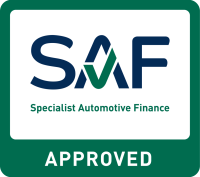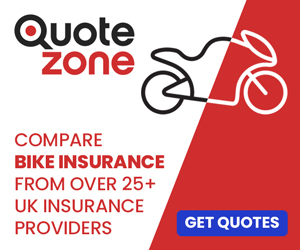

How to Start Riding a Motorcycle in the UK: What is CBT (Compulsory Basic Training)?
If you’re thinking about getting on two wheels for the first time, the term CBT is likely to come up early in your research. Compulsory Basic Training is the essential first step for anyone who wants to ride a motorcycle or scooter on UK roads. But what exactly is CBT, and how do you go about getting started with motorcycle riding? Let’s break it down.
What is CBT?
CBT stands for Compulsory Basic Training. It’s a legal requirement in the UK for anyone who wants to ride a motorcycle or moped on the road with a provisional licence. It’s not a test that you pass or fail — it’s a training course designed to ensure you can ride safely before hitting public roads.
Once you’ve completed your CBT, you’ll be issued a DL196 certificate, which allows you to ride:
- A moped (up to 50cc) if you’re 16 or older
- A motorcycle or scooter up to 125cc (with L-plates) if you’re 17 or older
Your CBT certificate is valid for two years. After that, you’ll need to either take your full motorcycle test or retake the CBT to continue riding legally.
What’s Involved in CBT Training?
CBT typically takes one full day and covers five main parts:
Introduction & Eye Test – An overview of the course, licence checks, and a basic vision check.
On-site Training – Learning the controls, starting and stopping, and basic safety checks.
On-site Riding – Practising manoeuvres in a safe, off-road environment.
On-road Training – Preparing for riding on public roads, including rules and safety tips.
On-road Riding – A minimum of 2 hours riding on public roads with an instructor.
It’s all about building confidence, safety, and awareness — not passing a test under pressure.
How to Get Started with Motorcycle Riding
Here’s a simple step-by-step guide to help you start your motorcycling journey in the UK:
Apply for a Provisional Licence
Before booking a CBT, you’ll need a UK provisional driving licence. You can apply for one at GOV.UK.Book a CBT Course
Find a local CBT training provider. There are many riding schools across the UK that offer them. We would recommend 2 Counties Rider Training (Nottingham/Derby) or Off The Kerb (London). Costs typically range from £120 to £180, depending on location and whether you need to hire a bike and gear.Attend the CBT Course
On the day, bring your provisional licence, wear appropriate clothing (thick trousers, jacket, and boots), and be ready to learn. Most schools will provide a helmet, gloves, and a bike.Get Insured & Taxed
Once you’ve completed CBT, you’ll need insurance, road tax, and L plates to ride legally. Your bike must also have a valid MOT if it’s over 3 years old.Think About the Next Step
With a valid CBT, you can ride a 125cc motorcycle with L plates — but you can’t carry passengers or ride on motorways. If you love riding, consider progressing to a full A1, A2, or A licence via a Direct Access (DAS) course.
Compulsory Basic Training is the gateway to freedom on two wheels. Whether you’re aiming to commute, explore the countryside, or just try something new, CBT is where it all begins. It’s affordable, accessible, and a great way to safely dip your toes into the world of motorcycling.
Categories
- General Motorcycling (39)
- Rider Training & Advice (5)
- Roads & Rides (6)
- Why it Matters (2)
Recent Posts
About us

Popular Tags
Related posts


Honda DCT Explained - How the Dual Clutch Transmission Revolutionized Motorcycle Riding

My Motorcycle is My Therapist: Finding Mental Wellness on the Open Road

The Best Motorcycle Chain Lube in 2025: Ultimate Guide to Performance, Protection, and Longevity
Nationwide Motorcycle Delivery
No corner of the UK is too far for the delivery team and it’s partners at Mallory Motorcycles. We proudly deliver to all major cities, towns, and even remote areas across the entire nation, including:
- London, England
- Birmingham, England
- Leeds, England
- Manchester, England
- Sheffield, England
- Milton Keynes, England
- Salford, England
- Sunderland, England
- Brighton & Hove, England
- Portsmouth, England
- York, England
- Colchester, England
- Chelmsford, England
- Exeter, England
- Gloucester, England
- Winchester, England
- Bradford, England
- Oxford, England
- Ripon, England
- Wells, England
- Liverpool, England
- Bristol, England
- Leicester, England
- Coventry, England
- Wakefield, England
- Nottingham, England
- Newcastle upon Tyne, England
- Doncaster, England
- Wolverhampton, England
- Kingston upon Hull, England
- Plymouth, England
- Derby, England
- Stoke-on-Trent, England
- Southampton, England
- Peterborough, England
- Southend-on-Sea, England
- Canterbury, England
- Preston, England
- Cambridge, England
- St. Albans, England
- Lancaster, England
- Norwich, England
- Chester, England
- Wrexham, England
- Durham, England
- Carlisle, England
- Worcester, England
- Lincoln, England
- Bath, England
- Hereford, England
- Salisbury, England
- Lichfield, England
- Chichester, England
- Newry, England
- Truro, England
- Ely, England
- Belfast, Northern Ireland
- Londonderry, Northern Ireland
- Lisburn, Northern Ireland
- Armagh, Northern Ireland
- Glasgow, Scotland
- Edinburgh, Scotland
- Aberdeen, Scotland
- Dundee, Scotland
- Dunfermline, Scotland
- Inverness, Scotland
- Stirling, Scotland
- Perth, Scotland
- Cardiff, Wales
- Swansea, Wales
- Newport, Wales
- Bangor, Wales
- St. Asaph, Wales
- St. Davids, Wales

Mallory Motorcycles Ltd is registered in England and Wales (Company Registration number 13948787). Registered Address Unit 2 Griffon Road, Derbyshire DE7 4RF. Authorised and Regulated by the Financial Conduct Authority (number 1037062). Mallory Motorcycles Ltd is a credit broker and not a lender. We can introduce you to a limited number of finance lenders and for such introductions we will receive commission. The commission payment can be either a fixed fee or a fixed percentage of the amount you borrow. The lenders we work with could pay commission at different rates. The commission we receive will not affect the amount you repay under the credit agreement. All finance is subject to status. Terms and conditions apply. Applicants must be 18 years or over.







